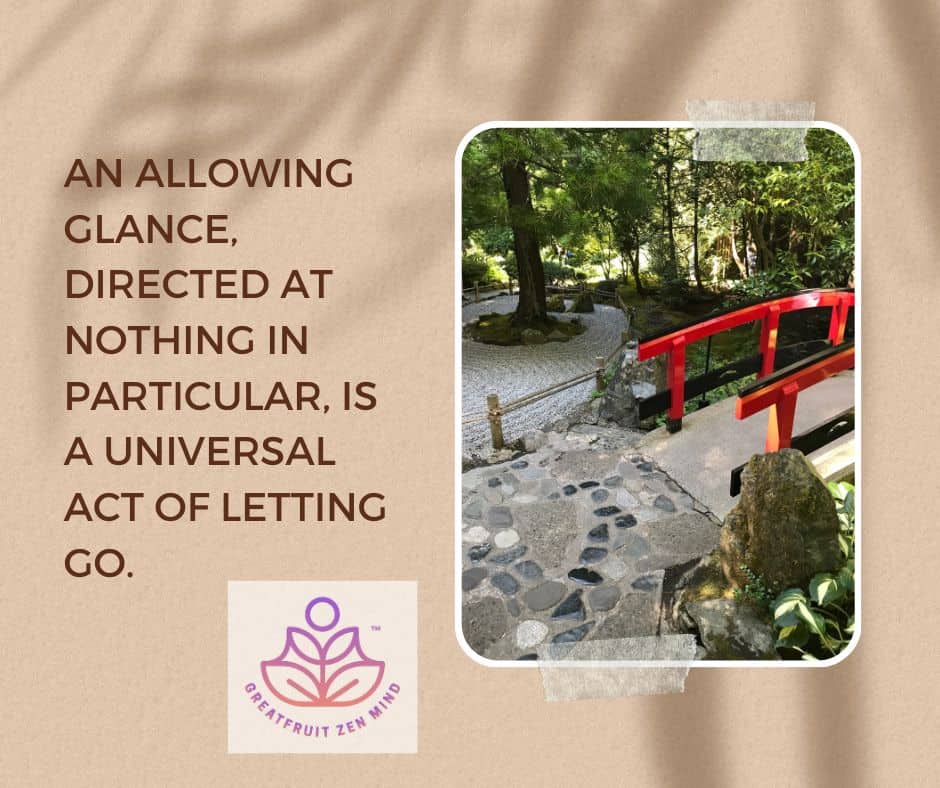Read time 3 minutes. A Universal Act of Letting Go is a stand alone article within our letting go series.
In our last lesson, we began exploring a universal act of letting go—a practice that sidesteps individual emotional battles in favor of something far more encompassing. Let’s slow down and take a closer look. Why does this method work the way it does? What makes it universal, rather than just another ordinary letting go?
Letting go without labels
You may recall an earlier exercise: asking ourselves, What do I really want to have happen here? That small question helped us pause, reflect, and navigate life with a little more grace. Less reactivity. More presence.
But over time, we began to notice the limits of that approach. As discussed in previous lessons—particularly around willpower and self-control—our ego tends to convert even spiritual effort into inner duality and conflict. We end up resorting to mind activity. Each emotional snag becomes its own mini war. Each internal dilemma, its own project to solve. Even when progress is made, there is perpetual, unending and relentless conflict.
That’s a lot of struggling for a path that promises peace.
Recall the lesson discussing not-doing and Zen’s idea of progress. Our tendency to hold bias and preference of one thing over another only serves to increase the illusion of duality and separateness. Inner struggle is increased along with it.
Zen points elsewhere. It reminds us that Tao sees the equality of all things—no one moment, no one thought or sensation, is above or below another. Yet when we label each issue as separate, as special, we increase inner resistance. Letting go becomes harder..
The shift from many problems to one solution
There’s beauty in this new gesture. When we stop isolating each emotion, each moment of unease, and instead redirect our awareness to the underlying tension itself, something changes.
That tension—the unease beneath the storyline—is universal. It’s the common thread beneath every triggered state, every perceived problem. And when we look toward it directly, without commentary or judgment, it softens. It dissolves.
We’re not letting go of this thing or that event. We’re stepping out of the illusion of separation. And in that moment, we’ve performed a unbiased, all-encompassing act of letting go.
That’s what makes it universal.
Faith, Tao, and the flavor of freedom
To practice this consistently, we need two things: acceptance and faith.
Acceptance, because Zen doesn’t fight with reality. It doesn’t need the story to change before freedom is possible.
And faith—faith that when we stop trying to micromanage our inner world, something wiser takes the helm. We no longer need to trust the ego’s schemes. We trust Tao. Instinct. Our deeper intelligence. We become the most intuitive, wisest versions of ourselves.
Over time, we begin to see the equality of all things. The mind calms. Observation becomes less biased. The illusion of inner separateness loses its grip.
Let it all go
This isn’t a big dramatic release. It’s a single, quiet glance. A shift in awareness toward the tension at the root. You don’t let go of ten different things—you let go of grasping itself.
And you can do it again. And again. No narrative required.
This practice has become a cornerstone of my inner work. In the next lesson, we’ll explore what it feels like to live from this place—and what kind of commitment this path might ask of us.
For now, just try it. One glance. Let it all go.
Explore more:
As I have said previously, I try to make these articles informative yet as short and to the point as I possibly can. Here is a really great, albeit intricate, discussion on the Stanford Encyclopedia of Philosophy. It extensively covers the topic of buddha-nature and the oneness of all things.
–
Thanks for visiting Greatfruit Zen Mind.
Independent and ad-free. Help us stay that way. Add fuel or shop around.
Photo by Angie Fritz
🌀 From the GZM Archives – Polished, Preserved, Still Relevant.


Leave a Reply